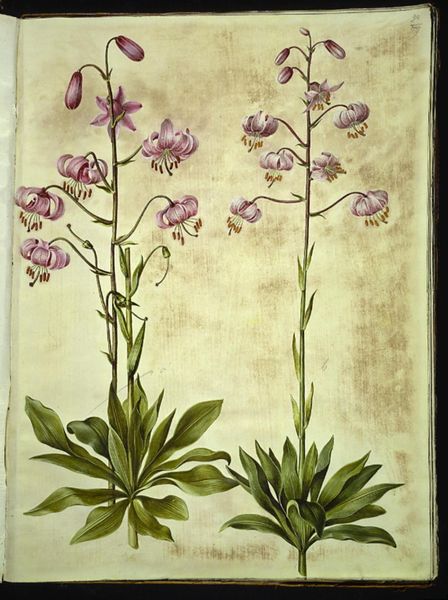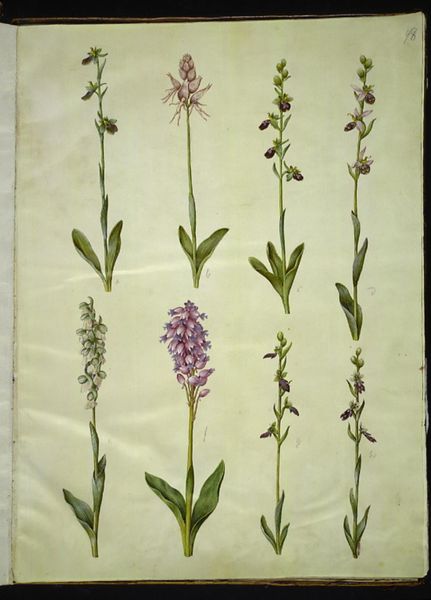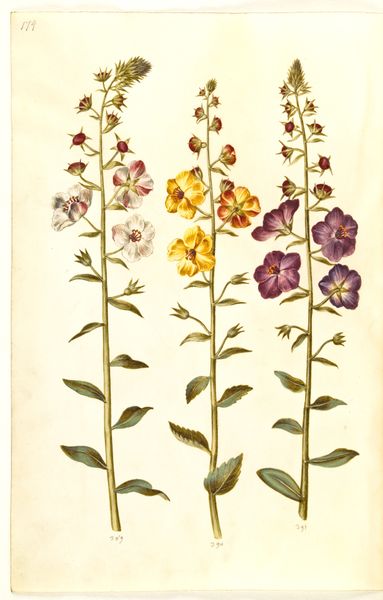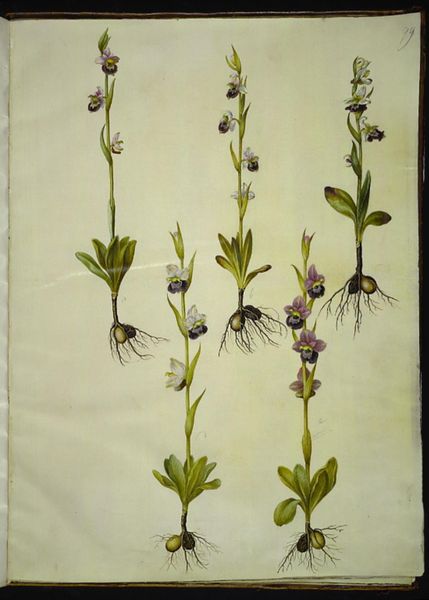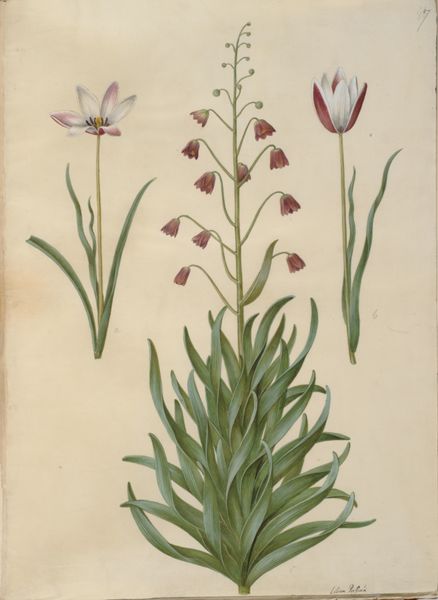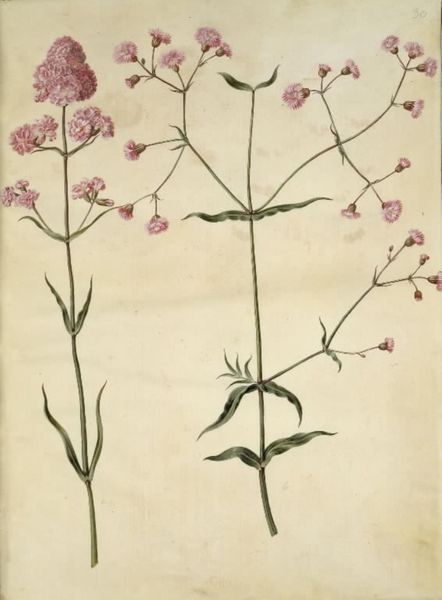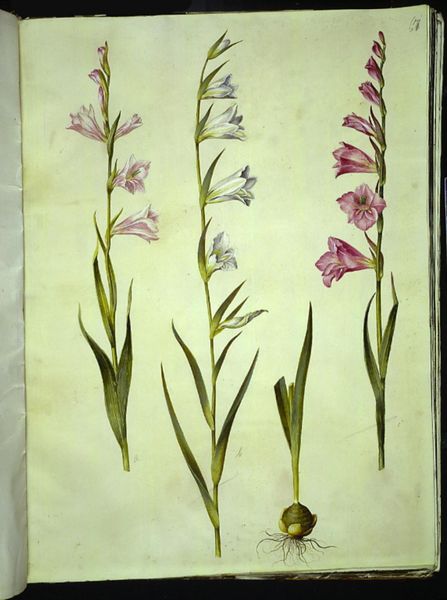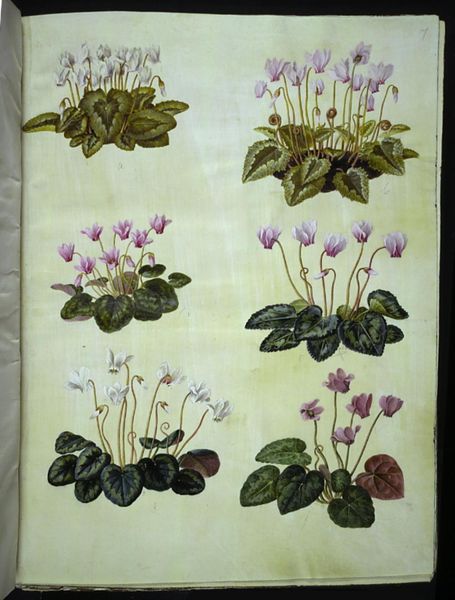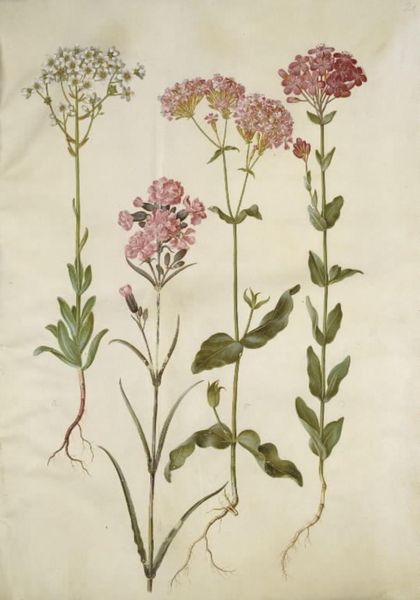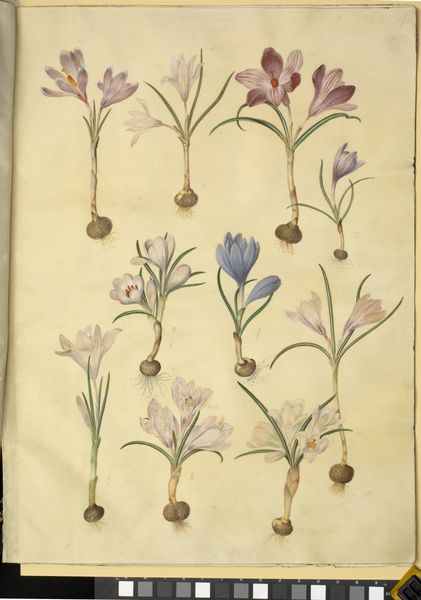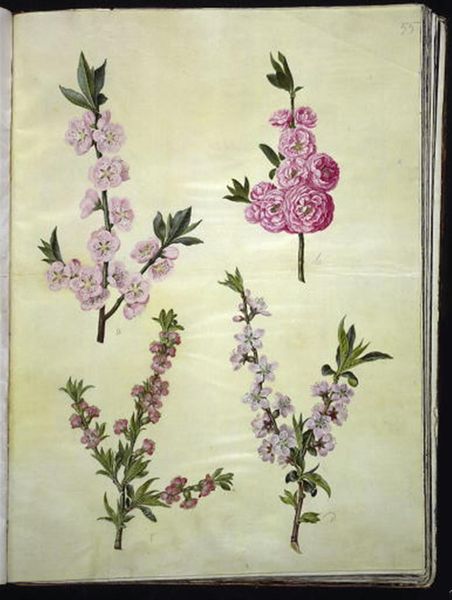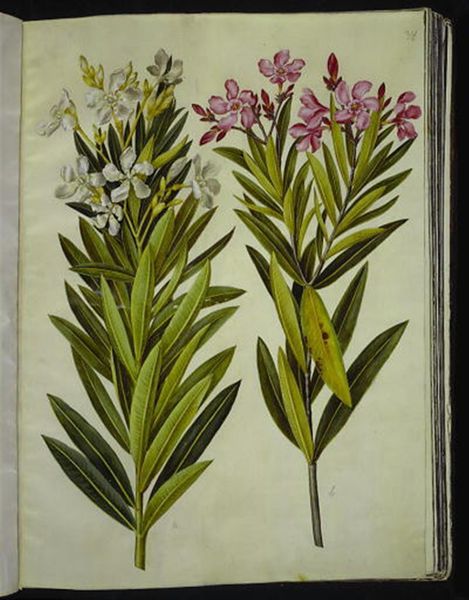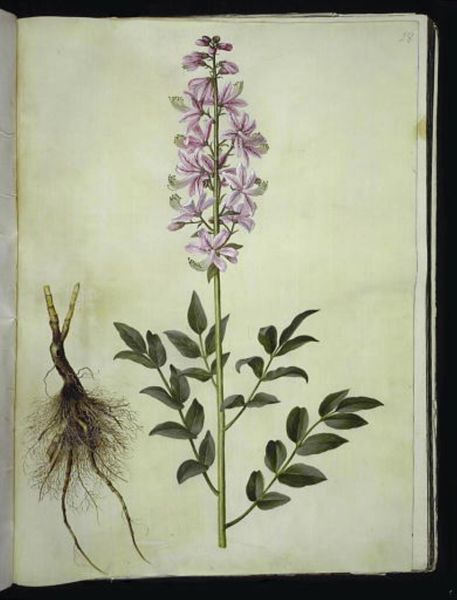
drawing, gouache, watercolor
#
drawing
#
medieval
#
gouache
#
watercolor
#
watercolour illustration
#
northern-renaissance
#
watercolor
Dimensions: 505 mm (height) x 385 mm (width) (bladmaal)
Editor: This beautiful watercolor and gouache illustration, "Lilium martagon (krans-lilje)," was created by Hans Simon Holtzbecker sometime between 1649 and 1659. It has this wonderfully detailed, almost scientific feel to it. What stands out to you, and how do you interpret this work? Curator: Well, seen through the lens of its time, these botanical studies weren't purely artistic endeavors; they served a vital function. This particular illustration, with its meticulous rendering, exists within a larger context of scientific inquiry and burgeoning natural philosophy. What’s compelling to me is the way it reflects the institutional push, particularly within royal circles, to categorize and understand the natural world, using art as a tool. Editor: So, you're saying it's not just pretty, it’s political? Curator: Exactly. Images like these, meticulously documenting plant species, played a key role in establishing visual authority. Consider the patronage; who commissioned works like these and for what purposes? Often, these were incorporated into grand encyclopedic projects, effectively shaping a specific visual language of scientific knowledge production. How does this botanical focus translate, do you think, into other cultural spheres of the time? Editor: I see. It’s about control and understanding. And I guess, back then, controlling knowledge was a form of power, right? Thinking about the public role, did ordinary people see works like this? Curator: Initially, their reach would have been limited to elite circles. But prints after such watercolors circulated widely, democratizing botanical knowledge to some extent. This intersection – a luxury watercolor reproduced and disseminated – highlights the complex social life of images in that period. What do you make of its seemingly straightforward depiction, given this wider context? Editor: I never really thought about how much these images could say. I appreciate understanding the science and cultural history behind such art pieces. Curator: Precisely. And hopefully, seeing it within its social and institutional history enhances its value for you.
Comments
No comments
Be the first to comment and join the conversation on the ultimate creative platform.
